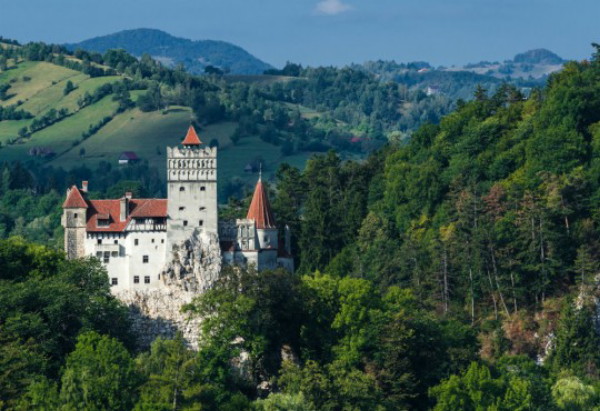Transylvania
Transylvania (Romanian: Transilvania, Ardeal; Hungarian: Erdély; Ukrainian: Семигород, Трансильванія, Залісся; Semyhorod, Transylvaniia, Zalissia). A historical land, until 1918 mainly within the borders of Hungary. Since 1918 it has been part of Romania. Transylvania has an area of approximately 99,600 sq km. The Maramureş region and the Banat region have usually been considered part of Transylvania. In ancient times Transylvania was settled by the Dacians. From 106 to 271 it was a Roman province, and its population was partly Romanized. Later it was conquered by the Goths, Getae, Avars, and Bulgarians. Slavs began settling in Transylvania in the 6th century, and from the 9th century Vlachs settled there. In the 10th century Magyar colonization by freemen known as Szeklers began, and in the 12th century Saxon and other German colonists arrived, who gave the land the name Siebenbürgen (hence, the Ukrainian name Semyhorod).
From the late 9th century Transylvania was under Hungarian rule. In the early 11th century it became part of the Hungarian kingdom but continued to enjoy a high degree of autonomy. After the fall of Hungary and the Battle of Mohács (1526) an independent Transylvanian principality arose. From 1541 to 1687 it was an Ottoman vassal-state. In the 17th century Transylvania was the object of Ottoman-Habsburg contention. In 1699 it became an Austrian crown land. From 1867 until it became part of Romania it was ruled by the autonomous Hungarian kingdom. In 1940 northern Transylvania was occupied by Hungary, but in October 1944 Romania regained that area. Romania’s claim was confirmed in the Paris Peace Treaties of 1947.
Medieval Ukrainian colonization of Transylvania is evidenced by place-names in the region (eg, Rusz, Reusdorfel, Russdorf, Ruseşti). The earliest extant documentation of such settlement is a 1220 charter, which refers to the mountain Ruscia and the town Forum Ruthenorum. In the 15th century there were sizable Ukrainian colonies in Transylvania, but they were later assimilated by the Magyars or Vlachs. The 1930 Romanian census identified only 2,100 Ukrainians in Transylvania outside the Maramureş region and the Banat region, most of them in Oradea county.
Ukrainian-Transylvanian cultural and political relations began during the Cossack period. Cossacks serving in the Wallachian army helped Prince Michael the Brave to unite Transylvania with Wallachia and Moldavia (1593–1601). In 1628 Prince Gábor Bethlen supported the idea of Ukraine’s secession from Poland as a separate state. Hetman Bohdan Khmelnytsky maintained diplomatic relations with the princes György I Rákóczi (1630–48) and György II Rákóczi (1648–60), and he signed an anti-Polish military pact with the latter prince in 1656. In the early 18th century the hetman-in-exile Pylyp Orlyk maintained relations with Prince Ferenc Rákóczi II. In 1699 some of Ioanikii Galiatovsky’s homilies were translated into Romanian and published in Alba Iulia. In 1757 the Transylvanian D. Braşoveanul modeled the first Romanian grammar, Gramatica românească, on Meletii Smotrytsky’s grammar; he also translated into Romanian several Slavonic (ie, Ukrainian) books, which were printed in 1792 in Sibiu. Since the Second World War Ukrainian migrants have lived in Cluj, Braşov, and Oradea, and a Ukrainian Orthodox vicariate of the Romanian metropoly of Transylvania has ministered to parishes where liturgies are celebrated in Church Slavonic.
Arkadii Zhukovsky
[This article originally appeared in the Encyclopedia of Ukraine, vol. 5 (1993).]

